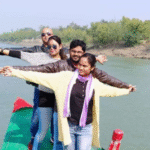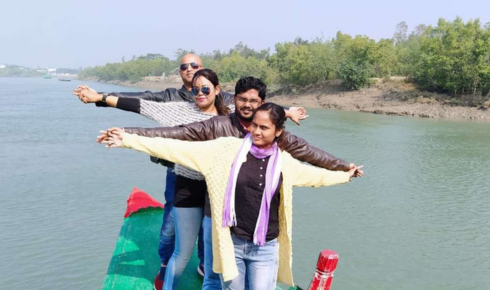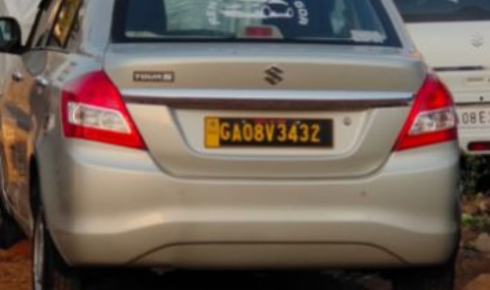In a region packed with high-profile travel hotspots like Thailand, Vietnam, and Bali, Laos often lingers in the shadows. Yet for those who venture beyond the typical Southeast Asia circuit, Laos quietly reveals itself as a soulful land of river-carved landscapes, sleepy towns, spiritual richness, and rare authenticity. It’s not a place that screams for attention, and that’s precisely what makes it special. While others rush from bucket-list locations to Instagrammable attractions, Laos offers a slower, more intimate experience. One where nature still rules, traditions still thrive, and locals still greet strangers with sincere smiles.
So why is Laos still considered underrated? And what makes it one of the most rewarding destinations in Southeast Asia? Let’s dive into what sets Laos apart from its more touristy neighbors.
What Makes Laos Different from Other Southeast Asian Countries?
While countries like Thailand or Vietnam have modern skylines and bustling cities, Laos takes pride in its calm, often timeless essence. It’s the only landlocked country in Southeast Asia, bordered by five others, yet it remains uniquely untouched in many ways. There are no train networks across the country (aside from the recent addition of the Laos-China Railway), and no mega-resorts or party beaches. What you get instead is endless greenery, Mekong River sunsets, UNESCO towns, remote ethnic villages, and a palpable sense of peace.
Luang Prabang, the former royal capital and now a UNESCO World Heritage Site, is often the entry point for many travelers. With its blend of golden temples, faded French colonial buildings, saffron-robed monks, and stunning waterfalls just outside the city, it represents the heart and soul of Laos. The town runs at a quiet pace, with early morning almsgiving ceremonies and night markets that still feel local rather than overly curated for tourism.
Is Laos Only for Nature and Culture Lovers?
Laos is a haven for those seeking connection — whether to nature, culture, or themselves. But don’t assume it’s only for quiet temple walks or jungle hikes. Adventure seekers will find their fill too. Vang Vieng, once infamous for its wild party scene, has evolved into an adventure tourism hotspot, offering rock climbing, kayaking, tubing, and hot air ballooning over breathtaking karst mountains. Further south in Thakhek and Pakse, motorbike loops wind through caves, coffee plantations, and serene plateaus, giving travelers a real sense of freedom and exploration.
That said, Laos is not a place for those looking for fast-paced nightlife or luxury shopping. It’s more about immersing yourself in slow travel — sipping Lao coffee on a wooden balcony overlooking the Mekong, riding a longboat to a hidden village, or simply observing the rhythm of daily life.
How Affordable is a Trip to Laos?
One of the biggest advantages of choosing Laos is how budget-friendly it can be. Compared to other Southeast Asian countries, Laos often offers better value for money, especially in accommodations, food, and transportation. Even in well-visited towns like Luang Prabang, you can find charming boutique guesthouses, affordable massages, and delicious meals at family-run eateries for just a few dollars.
A thoughtfully designed Laos travel package can cover essential experiences — from temple tours and river cruises to countryside excursions — without breaking the bank. For independent travelers, it’s possible to enjoy weeks in Laos for what you might spend in just a few days in other tourist-heavy destinations.
What About Connectivity and Tourist Infrastructure?
Until recently, Laos was considered a bit difficult to reach and navigate, especially compared to its neighbors. That perception is changing fast. The launch of the high-speed Laos-China Railway has cut travel time between major destinations like Vientiane, Vang Vieng, and Luang Prabang significantly. This modern rail line not only improves accessibility for travelers but also helps connect rural communities across the country.
While some areas still have patchy internet and limited infrastructure, most towns frequented by travelers are now equipped with decent Wi-Fi, ATMs, travel agencies, and English-speaking staff. What’s commendable is that despite this development, Laos still maintains its low-key, eco-conscious tourism approach. Homestays, nature-based tours, and locally-led experiences dominate over flashy resorts and tour buses.
When is the Best Time to Visit Laos?
Laos has a tropical monsoon climate, meaning the best time to visit is during the dry season from November to March. During this period, temperatures are comfortable, skies are clear, and rivers are easier to navigate. However, traveling in the shoulder season (April or October) can offer better rates and fewer tourists, along with lush landscapes.
Rainy season (May to September) has its charm too — waterfalls are full, the countryside is vivid green, and travel is still possible, especially in the north. Just be prepared for occasional transportation delays or muddy trails if you’re planning jungle treks.
Frequently Asked Questions (FAQs)
Is Laos safe for solo travelers?
Yes, Laos is generally very safe for solo travelers, including women. Violent crime is rare, and locals are warm, respectful, and welcoming. That said, use common sense, especially when hiking or exploring remote areas — let someone know your plans and stick to known paths.
Do I need a visa to enter Laos?
Most travelers can get a visa on arrival or apply for an e-visa online. The process is simple and quick. It’s best to check the latest entry requirements with your nearest Laotian embassy or official tourism website before travel.
What is the local currency, and can I use USD?
The local currency is the Lao Kip (LAK). While Kip is preferred for everyday transactions, US dollars and Thai Baht are accepted in many tourist areas. It’s wise to carry local currency for smaller shops, local transport, and rural visits.
What language is spoken in Laos?
The official language is Lao. In major towns and tourist spots, English is widely spoken, especially among younger people and those working in tourism. Learning a few basic Lao phrases can go a long way in building rapport with locals.
Is Laos suitable for family vacations?
Absolutely. Laos offers a wholesome, peaceful setting perfect for families. Children can enjoy nature-based activities like river kayaking, elephant sanctuaries, and visiting waterfalls. Many hotels are family-friendly, and the slower pace suits relaxed family itineraries.
Final Thoughts
Laos doesn’t try to compete with its flashier neighbors — and that’s its secret strength. It’s a country that invites you to slow down, observe, and truly connect. Whether you’re watching monks walk silently at dawn, paddling through a limestone cave, or sharing a bowl of noodle soup with locals, the experiences feel real and unfiltered.
As Southeast Asia continues to grow in popularity, destinations like Laos become even more precious. It reminds us of the magic of undiscovered places — where beauty isn’t always obvious but quietly unfolds the longer you stay. If you’re looking for an experience that’s soulful, scenic, and deeply rewarding, Laos may just be the gem you didn’t know you were missing.
And for travelers seeking a well-rounded experience, booking a customized Laos travel package can offer the perfect balance of ease and authenticity, taking you to both iconic sights and hidden corners. Laos isn’t just underrated — it might just be Southeast Asia’s best-kept secret.











